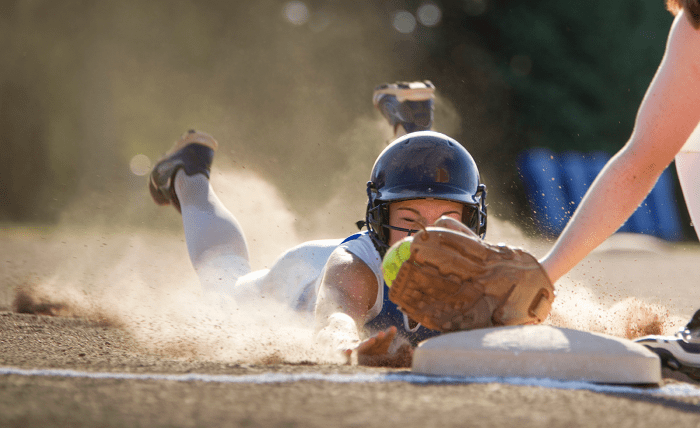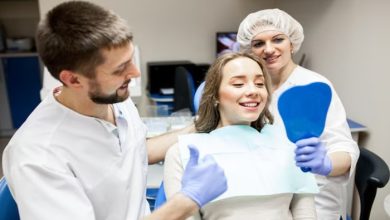
Sports participation brings countless benefits, from improved physical fitness to enhanced teamwork skills. However, athletic activities also carry inherent risks, particularly to the mouth and teeth. Dental injuries represent some of the most common trauma incidents in sports, affecting athletes across all age groups and skill levels. Understanding these risks and implementing proper prevention strategies can help athletes maintain their oral health while pursuing their athletic passions.
Common Dental Injuries in Athletic Activities
Athletic participation exposes teeth and supporting structures to various forms of trauma. The most frequent dental injuries include chipped or fractured teeth, which often occur when athletes collide with other players, equipment, or playing surfaces. These injuries can range from minor chips affecting only the enamel to severe fractures extending into the tooth’s root.
Tooth displacement represents another significant concern in sports-related dental trauma. Teeth may become loosened, pushed inward, or completely knocked out during impact. Complete tooth avulsion requires immediate attention and proper handling to maximize the chances of successful reimplantation.
Soft tissue injuries affecting the lips, cheeks, tongue, and gums frequently accompany dental trauma in sports. While these injuries may seem less serious than tooth damage, they can cause significant bleeding and discomfort, potentially affecting an athlete’s performance and overall well-being.
Root fractures, though less visible than crown damage, pose serious threats to long-term tooth health. These injuries may not become apparent immediately but can lead to infection, pain, and eventual tooth loss if left untreated.
High-Risk Sports and Activities
Certain sports carry higher risks for dental injuries due to their physical nature and potential for contact between players or with equipment. Contact sports like football, hockey, basketball, and soccer account for a significant portion of sports-related dental trauma. The combination of fast-paced action, player contact, and hard equipment creates numerous opportunities for dental injuries.
Combat sports such as boxing, martial arts, and wrestling present obvious risks to facial and dental structures. The intentional physical contact inherent in these activities makes protective equipment particularly crucial for participants.
Even non-contact sports can pose dental injury risks. Baseball and softball involve hard projectiles traveling at high speeds, while gymnastics and skateboarding present risks from falls and equipment contact. Cycling, particularly mountain biking, exposes riders to dental trauma through crashes and collisions with obstacles.
Individual sports like tennis and racquetball may seem safer, but accidental equipment contact or falls can still result in dental injuries. The key lies in recognizing that any athletic activity carries some level of risk and taking appropriate precautions.
Essential Protective Equipment
Mouthguards serve as the primary defense against sports-related dental injuries. These protective devices cushion the teeth and supporting structures during impact, significantly reducing the risk of tooth damage, displacement, and soft tissue injury. Custom-fitted mouthguards provided by dental professionals offer superior protection and comfort compared to over-the-counter alternatives.
Different mouthguard types serve various needs and preferences. Stock mouthguards provide basic protection at low cost but offer limited customization. Boil-and-bite mouthguards allow some personalization through heating and molding processes. Custom mouthguards, while more expensive initially, provide optimal fit, comfort, and protection levels.
Face shields and helmets with face protection add extra layers of security for high-risk sports. Hockey players benefit from full face shields, while football helmets include face masks designed to protect against various types of impact. These protective devices work best when combined with proper mouthguard usage.
Protective equipment requires proper maintenance and regular replacement to remain effective. Inspect mouthguards regularly for signs of wear, damage, or poor fit. Replace protective equipment according to manufacturer recommendations or when damage becomes apparent.
Prevention Strategies Beyond Equipment
Proper conditioning and training techniques help athletes avoid situations that commonly lead to dental injuries. Strength training focused on neck and jaw muscles can help athletes better withstand impacts. Balance and coordination exercises reduce fall risks in individual sports.
Rules adherence and fair play principles significantly impact injury rates across all sports. Athletes who follow rules and maintain good sportsmanship create safer playing environments for everyone involved. Coaches and officials play crucial roles in enforcing safety-focused rules and penalizing dangerous behavior.
Pre-participation dental examinations identify existing problems that could worsen during athletic activities. Athletes with loose teeth, extensive dental work, or other oral health issues may need special precautions or treatments before participating in high-risk sports.
Environmental awareness helps athletes avoid hazards that could lead to dental trauma. This includes maintaining playing surfaces in good condition, ensuring proper equipment storage, and identifying potential dangers in practice and competition venues.
Immediate Response to Dental Injuries
Quick and appropriate responses to dental injuries can mean the difference between successful treatment and permanent damage. For knocked-out teeth, handle the tooth by the crown only, rinse gently if dirty, and attempt to reinsert it into the socket if possible. If reinsertion isn’t feasible, store the tooth in milk, saliva, or a specialized tooth preservation solution.
Control bleeding through direct pressure using clean gauze or cloth. Apply cold compresses to reduce swelling and provide pain relief. Never apply ice directly to teeth or gums, as this can cause additional damage to already traumatized tissues.
Seek immediate professional dental care for all but the most minor injuries. Even seemingly minor chips or loose teeth require professional evaluation to prevent complications. Emergency dental services are often available for urgent situations that occur outside regular office hours.
Document injuries thoroughly for insurance purposes and follow-up care. Take photos when appropriate and keep detailed records of the incident, initial treatment, and subsequent care needs.
Long-term Considerations and Treatment Options
Dental trauma can have lasting effects that may not become apparent for months or years after the initial injury. Regular follow-up appointments allow dental professionals to monitor healing progress and identify developing complications early.
Severe dental injuries may require extensive treatment options, including root canal therapy, crowns, bridges, or tooth replacement procedures. Understanding potential treatment costs helps athletes and families plan for necessary care. For example, individuals researching long-term solutions might investigate the costs of dental implants in Ocala FL, and other locations to understand their financial obligations for permanent tooth replacement.
Athletic participation may require modifications during treatment and recovery periods. Some procedures necessitate temporary activity restrictions to ensure proper healing and prevent re-injury.
Building a Comprehensive Safety Culture
Creating environments that prioritize dental safety requires commitment from athletes, coaches, parents, and sports organizations. Education about injury risks and prevention strategies should be integrated into team training programs and league policies.
Regular safety equipment inspections and replacement programs ensure that all participants have access to properly functioning protective gear. Teams and organizations should establish clear policies regarding mandatory protective equipment usage during practices and competitions.
Conclusion
Preventing sports-related dental injuries requires a comprehensive approach combining proper protective equipment, smart training practices, and quick response capabilities. While athletic participation will always carry some injury risks, athletes who understand these dangers and take appropriate precautions can significantly reduce their chances of experiencing dental trauma. The investment in prevention through quality mouthguards, proper technique, and safety awareness pays dividends in maintaining oral health throughout an athletic career. Remember that professional dental guidance plays a crucial role in both prevention and treatment, making regular dental checkups an essential component of any athlete’s healthcare routine.



